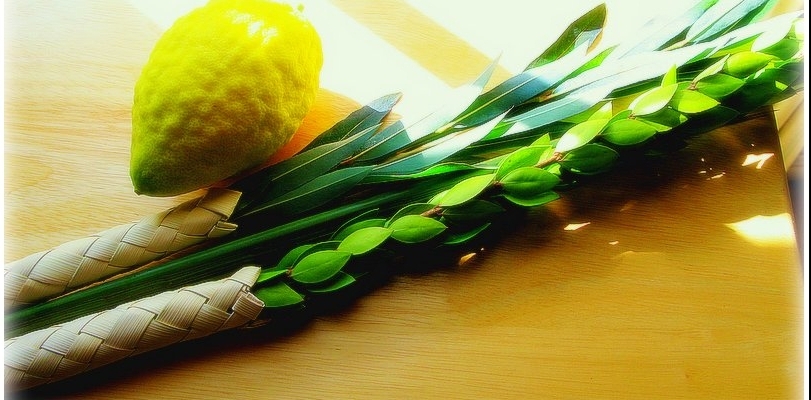“And you shall take for yourselves on the first day [of Sukkot] , the fruit of the hadar tree (the “etrog”), date palm fronds (the “lulav”), myrtle branches (the “hadassim”), and willow branches (the “aravot”) and you shall rejoice before Hashem your God for seven days” (Vayikra 23:40)
There are many interpretations as to what each of the four species of Sukkot represent. According to one approach, the four species are compared to the Sanhedrin (the ancient Supreme Religious Council), Torah scholars, three “rows” of student, and two court scribes.
Another interpretation teaches that the four species represent Abraham, Isaac, Jacob, and Joseph. There is the much-celebrated interpretation that compares the four species to four similar looking limbs of the human body: the spine, lips, eyes, and heart, teaching us that we should include our entire body in the service of God.
Finally, there is the well-known teaching that the four species represent the four types of Jews: The etrog (citron), which has both a good taste and a pleasant aroma, represents those who study the Torah and perform mitzvot (Torah commandments).
The lulav (date palm branch), which has a good taste but no smell, represents those who study the Torah but do not perform mitzvot.
The hadassim (myrtle branches), which have a pleasant aroma but no taste, represent those who perform mitzvot but do not study the Torah.
And the aravot (willow branches), which have neither good taste nor pleasant aroma, represent Jews that neither learn Torah nor perform mitzvot.
My good friend, Rabbi Yonatan Pachas, in his B’leiv Yam on the weekly Torah portion and holidays, notes that the right hand (or right side) is always given preferential treatment when performing mitzvot. For example, we cover our eyes during the recitation of the Shema (“Hear O Israel” prayer) with our right hand, we begin with our right hand when washing our hands, we hold the kiddush (Sabbath and Holy Day sanctification) cup with our right hand, we blow the shofar (ram’s horn) out of the right side of our mouth, and we hold a Torah scroll in our right arm, over the right shoulder.
Rabbi Menachem Meiri explains that this is because the right represents the side of good and, by giving precedence to the right, we constantly remind ourselves to follow the ‘right’ path of good.
When we shake the lulav and etrog bundle, we hold the lulav with the hadassim and aravot in our right hand and the etrog in our left hand. Why? As the Talmud teaches, the lulav bundle includes three mitzvot, while the etrog is only a single mitzvah. Therefore, the lulav is held in the right hand and the etrog in the left. Again – preference for the right hand.
However, Rabbi Pachas asserts that this is counter-intuitive. If, as mentioned above, the etrog represents the most righteous Jews, those that study the Torah AND perform mitzvot, surely the etrog should be given the honor of being held in the right hand!
Why are the other species given the distinction of being held in the right hand if they’re not going in the right path and not doing the right thing, while the “righteous” etrog remains delegated to the left hand, the less-prominent hand?
Rabbi Moshe Sofer writes that the Talmud itself alludes to this question and answers that it is because “the lulav bundle includes three mitzvot while the etrog is only one mitzvah.” Despite the ideal righteous Jew, represented by the etrog, his merits do not equal those of the masses.
Regardless of the righteousness of individual Jews, the power of the masses is unparalleled; the power of community is always stronger. Nothing stands in the way of the power of unity.
As we experience the holiday of Sukkot, the holiday that the Torah calls the “happiest festival of the year,” let us recall that happiness and celebration are only fully experienced and enjoyed when Jews from all walks of life can come together, break down the barriers, and serve God together, in joy and unity.
Chag Sameach (Happy Holidays) from Israel!
By: Rabbi Ari Enkin, Rabbinic Director, United with Israel

